Effective replacement of radiators with gas welding in the
Replacing old cast iron radiators is carried out in several cases. For example, they have fallen into disrepair or are so clogged that they do not fulfill their function, and you decided to install more modern bimetallic devices, convectors or aluminum sections for independent heating. One of the fastest ways is to replace the radiators with gas welding.
Therefore, our task today is to tell you about it in as much detail as possible.
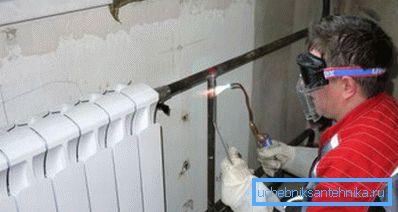
Why change the battery heating
The installation of new radiators makes it possible to transform the interior, therefore such works should be treated very responsibly. In addition, you can really reduce gas consumption if you have autonomous heating, while increasing the heat transfer of each section. As a result, in an apartment or house, space heating will be cheaper than previous seasons, and the level of comfort will increase.
The use of gas welding works is relevant if the wiring to the radiators is made of steel pipes. For example, in an apartment building the pressure of hot water is high, so the use of metal in this case is the best solution.
The method makes it possible to achieve reliable tightness, provides the normal functionality of the heating system for a long period of operation.
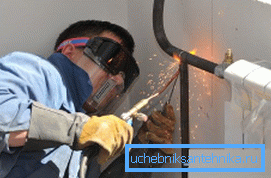
Tip: use gas welding only on pipelines with a diameter of less than 100 mm.
Process
All work should be performed only by a qualified specialist with years of experience and relevant education. In addition, the use of high-quality equipment that does not contradict modern safety requirements and allows you to get a reliable and accurate weld seam necessarily.
Advice: it is best to conclude a written contract with a contracting organization in which to indicate all solutions to possible problems from poor-quality repairs.
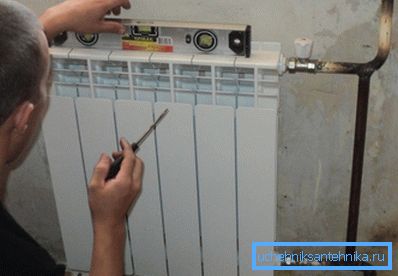
No less important is the sequence of work, as each stage has its own characteristics that should be paid attention to. Below is a small instruction to tell about them in more detail:
| Preparation for work | Drain the water from the heating system, otherwise problems may arise when dismantling old cast iron radiators:
|
| Dismantling | To do this, you need LBM ("Bulgarian"). We recommend cutting the pipes so that welding is easy to connect to them. Therefore, do not make a cut in a hard-to-reach place, for example, in a corner. |
| Packaging | The procedure can be done by hand using some materials and tools:
The work is carried out as follows:
|
| Installation | Installation of radiators is made on the chosen place. The connection to the eyeliner is made with the help of an “American”, and then the heating pipes are welded to the main standpipe for welding. Then carry out the connection of pipes by gas welding. |
Requirements
The demand for the replacement of old radiators today is great, so when choosing a welder, many are guided by the cost of his services, which is fundamentally wrong. This indicator can only say one thing: you may encounter an unskilled worker who cannot provide the required quality of welding.
Accordingly, the tightness and reliability of the system as a whole may suffer, and you will get big problems when hot water starts to flow into the apartment under high pressure.
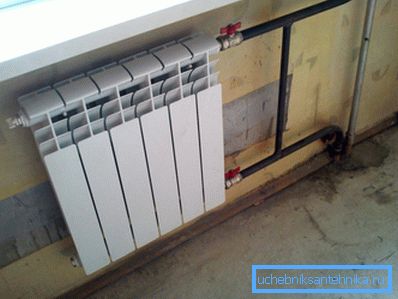
Qualified master involved in gas welding of radiators and other plumbing should have:
- The current certificate of fire safety and the certificate of the welder confirming his skill level.
- Modern equipment to perform work. It is very good when the welder works in an oxygen-acetylene environment. Be sure to also use filler wire.
- Positive feedback on the work performed.
Remember, do not grab at the first welder you came across, it is better to spend time searching for a real specialist than to “rake the rubble” and then look for the master again.
Advantages of gas welding
The use of gas welding to connect radiators with a riser is by far the most relevant, inexpensive and effective way.
Consider its advantages over other options:
- Aesthetic appearance of the connection, no heavyweight structures, nuts and fittings that need to be hidden.
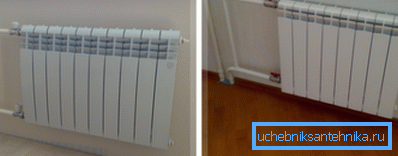
- The connection area has a high level of strength, eliminates the impulse of the system even with an increase in the standard pressure.
- No seals used in the threaded connection. Therefore, premature wear of the components of the joint is excluded. Guaranteed durability and reliability of the construction.
- It is used in systems with high pressure, where the threaded connections simply can not withstand the load.
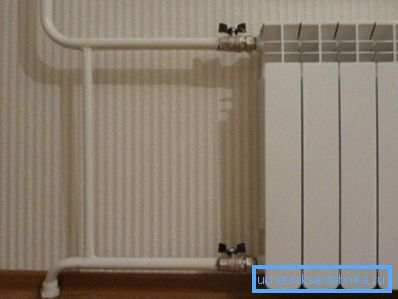
Conclusion
The use of gas welding to replace radiators is one of the best options. The process is short, different quality and efficiency. Installation of radiators can be carried out not only in the apartment, but also in a private house.
The video in the article will help you find additional information on this topic.